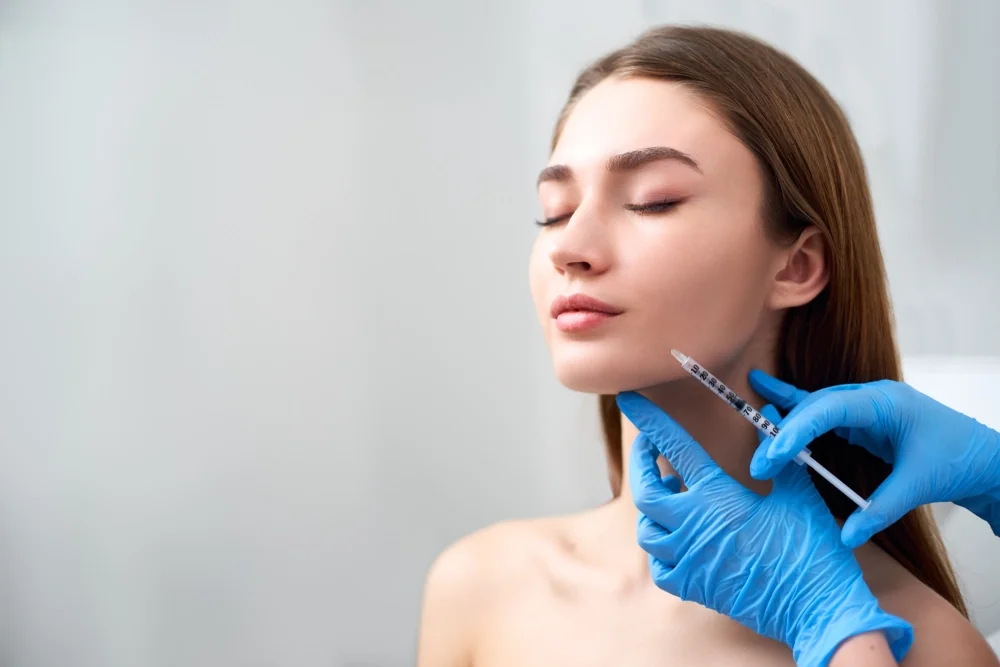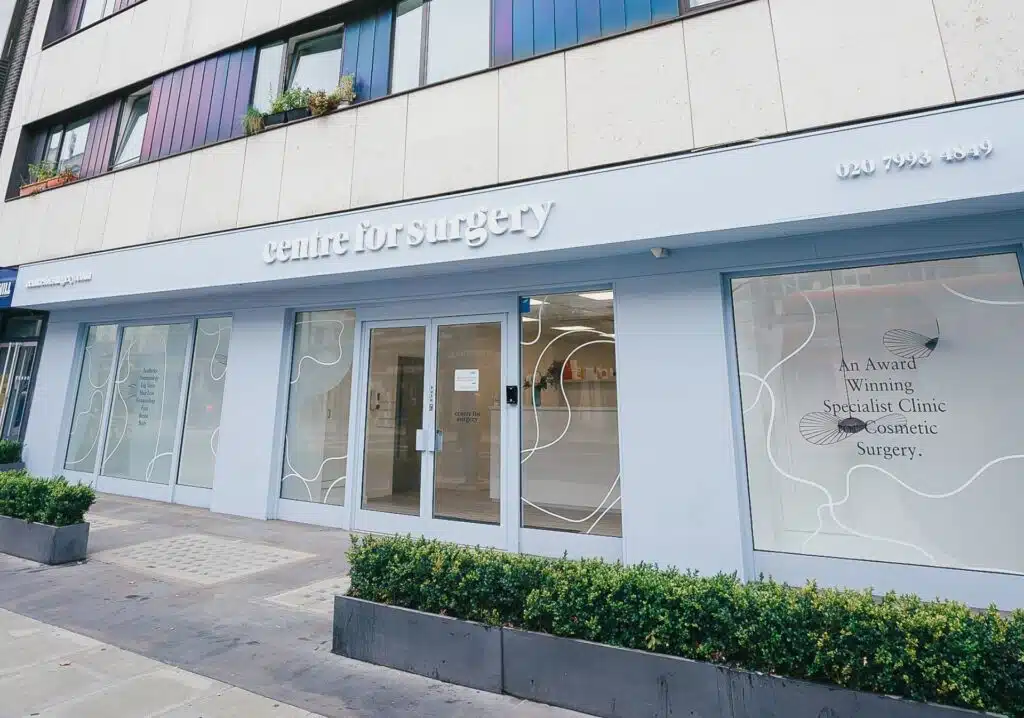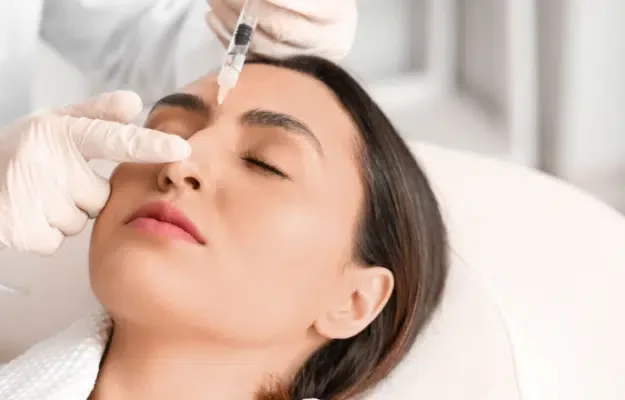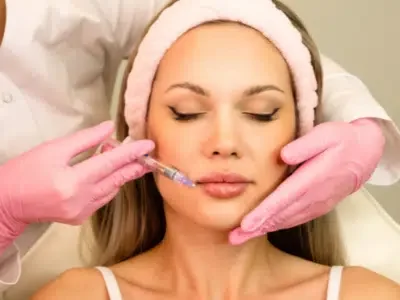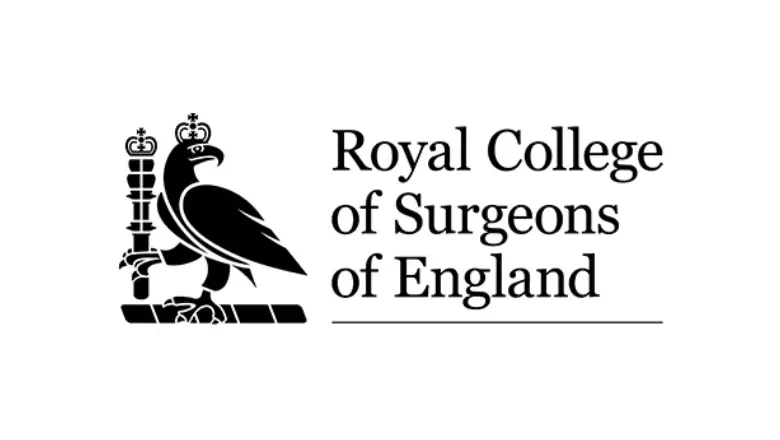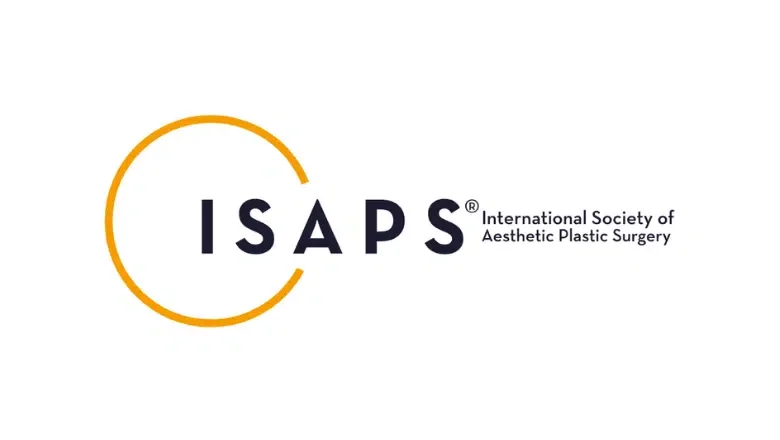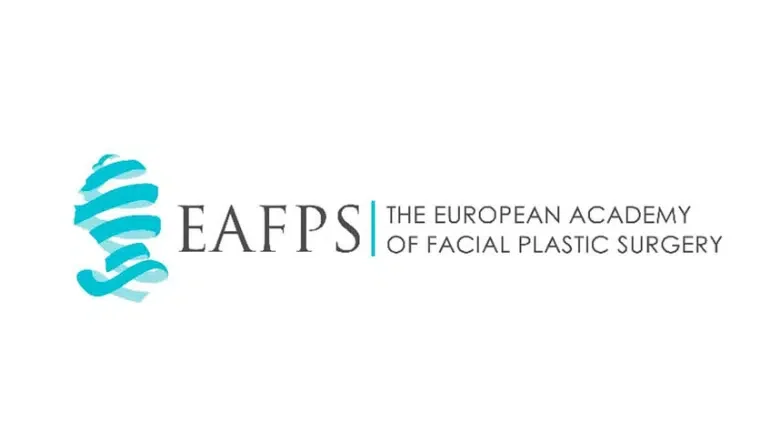Dermal Fillers in London
Dermal filler injections are the most exciting development in cosmetic surgery in recent years. Dermal fillers are injected precisely beneath the skin to restore a loss in volume or create softness. They can also fill out lines and wrinkles and address areas that have developed creases. Dermal fillers, including an 8-point lift, can be used for several aesthetic purposes. Soft tissue fillers can smoothen wrinkles, augment cheek volume, fill in acne scars, plump the lips, and more. The key to achieving excellence in dermal fillers relies on choosing a highly skilled dermatologist with years of expertise in managing skin concerns of all types. Dermal filler perfectly complements anti-wrinkle injections for a comprehensive approach to facial rejuvenation.
Many types of dermal fillers act in different ways. Some fillers work to attract the body’s natural water to create volume after injection. Other fillers are known as collagen stimulators – they stimulate collagen production, essential to healthy and youthful-looking skin. Every filler is unique and has specific uses. Many fillers have a more short-term effect on skin rejuvenation; others last for much longer with a greater effect on collagen formation.
Expected results of dermal fillers
- Enhance cheek volume
- Fill in fine and deep facial lines
- Lip enhancement
- Smoker’s lines around the lips
- Nose reshaping
- Chin crease filling
- Treatment of facial asymmetry
- Dark circles beneath the eyes
- Filling in depressed acne scars
Dermal fillers can be used for the following areas:
- Forehead and glabella
- Temporal hollows
- Cheek fillers
- Tear trough fillers
- Jawline and chin
- Nasolabial folds
- Marionette lines
- Nose reshaping
- Lip fillers
Dermal fillers are an increasingly popular method for facial rejuvenation. They are consistently rated as the second most popular non-surgical aesthetic procedure in the UK, with an estimated 60% increase in dermal filler procedures over the past five years. Proper use of these products requires expert knowledge of facial anatomy, the facial ageing process, and product characteristics. The goals of the procedure range from correction of age-related changes to optimisation of facial proportions.
Our practitioners are experts at facial volumisation and lifting and often use combinations of products and techniques to achieve pan-facial rejuvenation.
What Are Dermal Fillers?
Dermal fillers are injectable substances with a gel-like consistency used to augment and sculpt facial features, counteract volume loss, address fine lines, enhance hydration, and boost the skin’s overall radiance. One of the primary components of these fillers is a stabilised, non-animal form of hyaluronic acid, a naturally occurring sugar molecule found in the human body.
The beauty of dermal fillers lies in their versatility, as they come in an assortment of thicknesses and formulations specifically designed for targeted applications in various areas of the face. The selection of a particular type of filler is influenced by the desired outcome and the characteristics of the area being treated. For instance, a denser filler may be chosen for augmenting cheekbones. In contrast, a softer, more pliable filler might be more appropriate for treating delicate areas such as the lips or under the eyes.
Additionally, besides hyaluronic acid, dermal fillers can comprise different ingredients, each with unique properties that contribute to the varied applications and results that can be achieved. The purpose of using dermal fillers is to correct certain aspects and provide a more youthful and revitalised appearance by adding volume and improving the skin’s texture and hydration levels.
Benefits of Dermal Filler Treatments
Replenish Diminished Facial Volume
The administration of injectable fillers aids in counterbalancing the loss of facial volume, which is often a consequence of ageing. This helps reinstate the face’s natural contours that might have attenuated over time.
Facilitate Natural-Looking Volume Enhancement
Dermal fillers offer the advantage of achieving nuanced and natural-looking results that harmonise with the inherent structure of your facial tissues, ensuring that the outcome does not appear artificial.
Amplify the Prominence of Cheeks
With the strategic use of injectables, it’s possible to introduce symmetry and a sense of fullness to the cheeks. This is achieved by employing fillers specifically designed to sculpt and enhance facial contours and curves.
Refashion Facial Structure
When expertly administered, fillers can significantly redefine features such as the jawline or cheekbones, which tend to lose definition as we age. This can contribute to a more sculpted and youthful appearance.
Highly Regarded and Minimal Risk
The dermal fillers we utilise meet stringent quality and safety standards. Furthermore, we are committed to using only top-tier, reputable brands, which bolsters the assurance of efficacy and safety.
Instantaneous Results
One of the enthralling aspects of dermal filler treatments is that the results are immediately discernible post-procedure. However, it is prudent to reserve judgment on the outcome for a period of up to 6 weeks, as the filler requires time to integrate smoothly with the surrounding tissues, thereby allowing it to soften and settle into a more natural state.
What Are Dermal Fillers Made From?
Dermal fillers are increasingly popular for enhancing facial aesthetics, and one of their primary components is Hyaluronic Acid (HA). This substance is a natural component found within our bodies, significantly reducing the chances of allergic reactions when used in treatments. Its natural presence in our system makes it a highly compatible choice for cosmetic enhancements.
The unique properties of hyaluronic acid fillers make them exceptionally effective in augmenting the skin’s appearance. They possess an innate ability to attract and retain water. This characteristic is pivotal in their function, as it assists in adding volume, providing clear definition, and imparting a desirable shape to the treated areas. Additionally, they play a vital role in hydrating the skin, leading to a more refreshed and youthful look.
The effects of hyaluronic acid fillers, however, are not permanent. Typically, their impact can last anywhere from six months to two years. The duration is influenced by factors such as the filler’s density and the rate at which an individual’s body metabolises the substance. This temporary nature is often seen as an advantage, allowing for adjustments over time to suit changing aesthetic preferences.
Another remarkable feature of hyaluronic acid fillers is their reversibility. In situations where the results need to be altered or reversed promptly, a specific enzyme can be injected. This enzyme swiftly breaks down the hyaluronic acid, enabling practitioners to correct or modify the outcome of the filler treatment almost immediately.
RELATED: Filler Dissolving Treatment London
Ideal Candidates for Dermal Fillers
- Would like to reduce lines, wrinkles or folds on the face (nose to mouth lines, smoker’s lines, smile lines, laughter lines)
- Would like to increase the volume of the lips
- Have experienced a loss in cheek volume or volume around the eyes
- Would to reshape the nose, chin, and jawline but are not keen on a surgical procedure
- Treatment of facial scarring, including acne scars
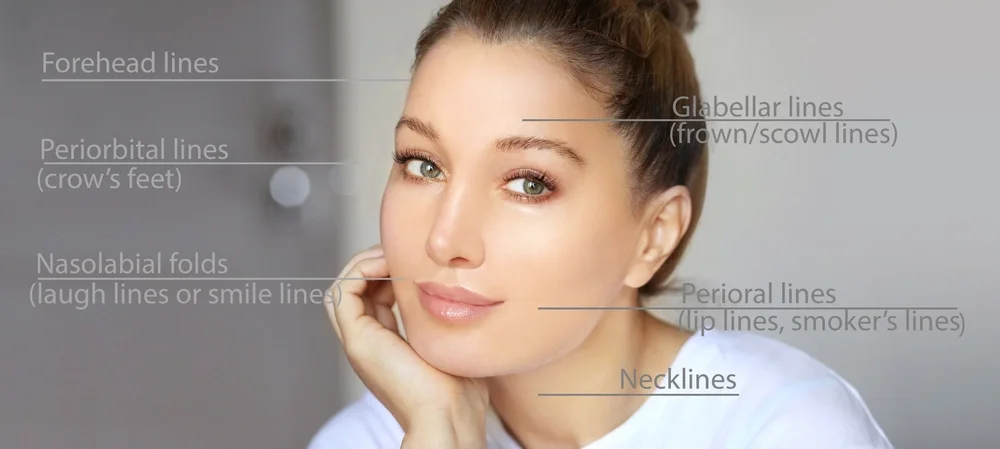
How To Prepare For Dermal Fillers
The success of dermal filler injections relies on the patient being properly prepared for the procedure in the weeks beforehand. Before the procedure, you will be required to stop certain products and medications and reduce your intake of foods high in alpha-omega 3.
Two weeks before dermal filler injection
Patients should avoid fish, fish oil nuts or seeds or NSAIDS such as ibuprofen, which have been shown to increase the risk of bleeding. Arnica tablets are very useful to help with reducing any post-injection bruising. Arnica tablets can be purchased over the counter from most pharmacies. If you are on any prescription medicines known to increase the risk of bleeding, these may need to be stopped before treatment. It is very important to speak with your GP before stopping any medicines and receive instructions on the best time to restart the medication. Patients on medicines vital for health should not stop their medicines in any circumstances. In this instance, having a cosmetic procedure may not be appropriate. Patients with a history of cold sores must commence a preventive course of acyclovir before treatment. This is to ensure there is no flare-up of herpes virus infection. Your doctor will be able to prescribe this for you before treatment. Finally, it is very important to read and understand the treatment consent form so you are fully familiar with the benefits, risks and complications associated with dermal filler treatment.
On the day of your procedure
Please make sure to eat a light meal before your filler injections. This helps to raise blood sugar and minimise the risk of fainting during treatment. Many people are understandably apprehensive about needle injections, which is amplified by not having eaten or drunk before your treatment.
Please refrain from wearing any makeup before dermal filler treatment in the areas planned for treatment. Your practitioner must remove any makeup from the treatment area before your procedure. You can apply a light make-up product for camouflage immediately after the filler treatment.
Please aim to arrive 30 minutes before your allocated appointment to enable the application of local anaesthetic numbing cream to the face. Local anaesthetic numbing cream needs at least 20-30 mins to achieve its full effect. This is why we ask patients to arrive a little earlier than usual.
Before you leave your appointment, we advise booking your next appointment. This ensures you get your preferred timing, as our surgeons often get booked up to three months in advance. We never double-book patients for any facial injectable procedure.
Dermal Filler Injection Techniques
Hyaluronic Acid (HA) Fillers
Hyaluronic acid is found naturally within our bodies and is known to have a very natural feel and look. HA fillers can, therefore, be safely injected into the skin for volumising and shaping. Compared with older collagen fillers, HA fillers do not require formal allergy testing before injection. Hyaluronic acid works to generate soft tissue volume when injected into the skin. HA fillers are soft in consistency and have a gel-like feel to them. Differences between hyaluronic acid fillers relate to the degree of cross-linking and viscosity. Our skilled practitioners are experts in knowing what type of HA fillers are most appropriate for facial injection locations. Hyaluronic acid fillers generally have effects which last from six to twelve months before the HA is broken down naturally within the body. The safety of hyaluronic acid fillers is also rooted in their reversibility. Hyalase can be used to remove HA filler if required. HA fillers typically come packaged in 0.5ml or 1ml syringes and newer variants in lidocaine. Lidocaine acts to minimise discomfort during the injection of dermal fillers.
Facial fat grafting
Fat injections involve using the patient’s fat, which is re-injected into the face. Compared with temporary dermal fillers, fat injections are a more permanent option for adding facial volume. Fat injections can be ideal for patients not keen on regular dermal filler injections yearly. Fat injections to the face are a specialist technique only performed by fully qualified facial plastic surgeons in an operating theatre environment.
RELATED: Micro & Nano Fat Grafting
Dermal Filler Treatment Areas
Dermal fillers are incredibly versatile, with a wide range of applications in the face. Your practitioner will recommend the most appropriate HA filler based on the treatment area.
Lip augmentation
Lip fillers are one of the fastest-growing dermal filler treatments currently performed at the Centre for Surgery. With the rise of many Hollywood celebrities having had lip fillers, many patients are now keen to have their lips enhanced with filler. Lip filler with hyaluronic acid is performed to enhance the lip volume or reshape the lips and to correct pre-existing asymmetry of the lips from trauma or previous injury. Optimum lip aesthetics dictates that the upper lip should be 2/3 the size of the lower lip. The use of lip filler can lead to subtle or very dramatic results depending on patient preference. Our philosophy is always to proceed slowly and incrementally to ensure you are happy with the size and shape of your new lips. Placing too much lip filler too quickly can often lead to the unsightly looking ‘duck lips’ or ‘fish lips’ which most would agree is not an ideal outcome from lip filler treatment. The expert placement of lip filler depends on always customising the treatment to fit the patient’s facial anatomy to ensure a natural and harmonious result.
Cheek Fillers
Cheek augmentation with dermal fillers is a commonly performed procedure. For younger patients, cheek filler injections can increase facial cheekbone contour. For older patients with significant facial volume loss, cheek fillers can restore plumpness and youthfulness to the cheeks. Cheek fillers are great for restoring cheek volume and also work well to lift the nasolabial lines.
Nasolabial lines
The nasolabial folds or nose-to-mouth lines are the deep lines at both sides of the mouth, which become more prominent when smiling. Almost everyone has nasolabial lines apart from babies. The presence of nasolabial folds does not imply premature ageing. However, they do increase in prominence with the ageing process as the face begins to lose collagen and gradually loses fat. This is often the case in the cheek region. It is essential to avoid overfilling the nasolabial folds to avoid an unsightly protruding look. All our practitioners are experts in dermal filler injections, and often, the best treatment is to support the nasolabial folds with an injection of cheek filler, which helps to elevate the nasolabial folds and, therefore, make them less visible.
Marionette lines
The marionette lines refer to the lines running from the mouth towards the chin. With age and the influence of gravity, the loss of elasticity results in the face being pulled down. Many patients develop prominent lines that form from the mouth’s outer corners and point toward the chin. When noted by others, these marionette lines can make patients look sad or angry. Many patients who form marionette lines are thought to have a genetic link. Still, the targeted injection of dermal fillers is an excellent option to treat this aspect of facial ageing.
Jawline Fillers
Jaw fillers are a commonly requested treatment at the Centre for Surgery. Precise placement of filler along the jawline can increase jawline definition. In men, jawline fillers can help achieve a more masculine jawline with a more square-shaped jaw than a rounded one. With the ageing process comes a loss of bone and soft tissue elasticity. This eventually distorts the jawline, leading to the eventual formation of jowls. By using dermal fillers in the area known as the pre-jowl sulcus, excessive jowling can be blended with the chin area to reduce the appearance of jowls.
Chin Fillers
Chin fillers are often performed for a variety of reasons. Both chin wrinkles and chin recession can be successfully treated with dermal filler injection. For patients lacking facial balance, the injection of chin filler can help restore facial proportions. A small chin can result in a more rounder-looking face when compared with a stronger chin, which gives the impression of a more oval-shaped face. Men often prefer a more angled chin due to its more masculine appearance. For many patients not keen on chin implant surgery, chin augmentation with dermal filler can be a great option to achieve a more defined chin and jawline.
Deep forehead lines
Deep forehead lines develop due to the weight of the upper eyelid and brow and most commonly develop during the ageing process. Patients then develop the habit of subconsciously raising their brows to keep their eyes more open. Treating horizontal forehead lines involves a combination of neurotoxin and dermal filler. Neurotoxin is first administered to relax the forehead muscles, followed by the injection of dermal filler two weeks later.
Frown lines
The frown lines between the eyebrows are developed due to excessive frowning and squinting. The first line treatment of frown lines involves using neuromodulators to selectively weaken the brow muscles, which are responsible for causing the frown lines. In more advanced cases of frowning, dermal fillers may be required to address the static frown lines present at rest. Only the most experienced plastic surgeons are qualified to undertake dermal filler treatment in this region, as they have a very sophisticated understanding of the three-dimensional anatomy of the face.
Temple hollows
The temples are located on the side of the forehead and often begin to hollow with age. This can create an unsightly look to the upper third of the face. For many patients who otherwise demonstrate youthfulness, temporal hollows may be the earliest sign of ageing. Targeted dermal filler injections or fat grafting can be used to volumise the temple area and increase facial width in the upper part of the face.
Tear trough filler
The tear trough region refers to the area beneath the eyes. Deformities of the tear trough result in a sunken and hollowed-out appearance to the eyes, often making the patient look permanently tired to others. Tear trough deformities lead to the formation of dark circles over the lower eyelid. Dark circles can sometimes be treated with a concealer, but the long-term solution is dermal fillers for the more significant types of tear trough deformities. The ideal candidate for tear trough treatment with dermal fillers is a younger patient with good skin quality and mild to moderate hollowness in the lower eyelid area. In those older patients with more obvious bags under the eyelid, tear trough treatment with HA filler is not appropriate. The best treatment would be a lower eyelid blepharoplasty.
Hollowness of the upper eyelids
With age, many people develop hollowness of the upper eyelids. The periocular region, including the surrounding bone, tends to lose volume over time, even affecting the eyeball itself. The result is a hollowed-out appearance that can worsen with surgical methods. A complication of upper blepharoplasty develops when surgeons remove too much eyelid fat, which can develop an ‘A-frame’ deformity. With upper blepharoplasty, the best treatment is to remove lesser amounts of eyelid skin and perform fat grafting or dermal fillers to the upper eyelid area and orbital rim. The increased youthfulness results from the added volume to address the hollowness of the orbits.
Liquid Rhinoplasty
Non-surgical rhinoplasty, also known as liquid rhinoplasty, is often used to address dorsal humps or increase the height of the nasal bridge. The nasal tip can also be reshaped. All dermal filler is injected into the superficial layer of the skin, and the results can last from six to twelve months. Not all patients are ideal for non-surgical rhinoplasty, including those who desire a smaller nose and those who have previously had rhinoplasty surgery. A non-surgical rhinoplasty can be ideal for those considering a surgical rhinoplasty but not yet ready to proceed. They would like to see how their nose could look after a surgical procedure.
Acne scarring
Acne scars are a very common sequel to previously untreated active acne. Acne scars come in several common variations. However, many can be treated successfully with precise dermal filler placement during acne scar treatment to elevate the acne scar depressions and improve overall skin texture.
Dermal Filler Injection Techniques
The key to success in dermal filler injections lies in our surgeons being dedicated facial injectors with many years of training and expertise in achieving natural and beautiful results. Unlike anti-wrinkle injections, dermal fillers carry significant risks if not performed correctly. With injectors who lack knowledge of facial anatomy, dermal filler can be inadvertently injected into a blood vessel, which could lead to severe complications. When injected into blood vessels, dermal filler could result in severely restricted blood flow to a particular face part. If this is not treated quickly enough, it could lead to severe tissue injury of the face.
Dermal filler injection techniques
Linear threading – The entire length of the needle is inserted into the location of the filler injection, which is then slowly withdrawn in a straight line whilst injecting the filler. Threading is the term used to describe the small deposits of filler placed into the line, fold or wrinkle.
Serial puncture – Dermal filler is injected in very small deposits placed at injection points, which are situated very close to each other
Fanning – this technique is similar to linear threading; however, the direction of the needle or cannula is moved just before exiting the skin, and a line of filler is placed in a new direction.
Depot – Dermal filler is placed multiple times into a given treatment area as a bolus injection.
Cannula Method or Needle Method of injecting dermal filler
Dermal filler can be injected with either needles or the newer hollow blunt-tipped cannulas. Each has its advantages and disadvantages, as discussed below.
Cannulas are hollow tubes with blunted and rounded ends that require a separate needle puncture before being inserted into the skin. Due to their blunt-tipped end, cannulas have a lower risk of penetrating blood vessels as their blunt tip maximises their ability to glide past blood vessels. Dermal filler placement with a cannula also requires fewer needle pricks through the skin with the ability to treat more areas from a single entry point.
Advantages of a cannula for dermal filler
- Less risk of localised bruising and bleeding
- Less discomfort with cannula injection
- Less risk of blood vessel injury
- Less downtime and quicker recovery due to less bruising and swelling
Dermal filler injection using needles is the more traditional method. There are specific applications which make a needle for injection more preferable. This is often the case where only a very small amount of filler is required to create an optimum effect. Fine lines, acne scars or small touch-up injections would be an ideal example of this. Creation of the ‘cupids bow’ on the upper lip would also be better with a sharp needle for increased precision. The micro-droplet technique is also well suited to performing with sharp needles. The micro-droplet demands the highest accuracy and precision, and needles are best for this. In most cases, a combination of both a needle and cannula technique is the best option to ensure you benefit from the advantages of both techniques for injecting dermal filler.
How Much Do Dermal Fillers in London Cost?
There are several factors which will impact the final cost of your dermal filler injection procedure:
- Number of syringes of filler required
- Combination treatments with anti-wrinkle injections
- Complications of dermal filler from another clinic
Why not call 0207 993 4849 and speak to one of our expert patient coordinators, who can give you a rough costing before dermal filler injections?
Remember that price should never be the determining factor when choosing your provider. We feel that safety and quality of service should be your number one priority, and we instil in you the confidence that our team will look after you before, during, and after your procedure to the best of their ability.
Recovery After Dermal Filler Injections
With dermal filler treatment, it is normal to have some localised bruising, swelling, and pinpoint bleeding from the needle entry points. If you had numbing cream applied, then this usually takes 2-3 hours to wear off. You can improve the healing process by following all the post-procedure instructions your doctor gave you.
Top tips for optimum recovery after dermal fillers
- Use cold packs gently applied against the treated area for approximately 15 minutes on and 15 minutes off. This should ideally be continued for the first 48 hours after treatment.
- Any strenuous exercise should be avoided for 48 hours to reduce bruising and swelling.
- Do not massage or manipulate your face in any way after treatment. Facials or scrubbing of the face should be avoided for one week after treatment to avoid filler migration. Gentle face washing is allowed.
- Light makeup and/or concealer can be applied immediately after your treatment to reduce the appearance of bruising on the skin.
- Patients having non-surgical rhinoplasty should avoid wearing spectacles if they press into the treated area. You should bring your spectacles to your appointment so your surgeon can see if they are appropriate after your procedure. If you like swimming and wear goggles, this must also be mentioned to your surgeon at consultation.
RELATED: When Can I Wear Glasses After Non-Surgical Rhinoplasty?
- Do take arnica tablets to accelerate the disappearance of bruising.
- Pineapples and pineapple juice have been shown to reduce swelling, so it is recommended to have pineapples after treatment.
- Avoid overanalysing your face for the first couple of weeks after treatment. It is very normal to have bruising, swelling, and a degree of asymmetry, which are often due to swelling. Your surgeon always recommends waiting two weeks before the final results can appear.
- If you have any pain or discomfort in the treated areas, taking paracetamol is recommended to help with post-injection pain. NSAIDS such as ibuprofen must be avoided as these increase the risk of prolonged bruising due to their action on blood platelets.
How long do dermal fillers last?
Hyaluronic acid can last up to 18 months when injected into areas such as the nose or cheeks. Dermal filler’s effects can appear to reduce after a shorter period. In more mobile and dynamic areas of the face, such as the lips, where muscular contraction and movement are frequent, dermal fillers last a much shorter period. Dermal fillers in areas like the tear troughs or nose can last much longer – often over one year, depending on the type of filler used.
The concept of ‘full correction’ with dermal fillers
To appreciate how long dermal fillers can last, it is essential to understand that full correction means correcting a facial issue with the recommended filler. For example, deep folds affecting the nasolabial lines may require two or even three syringes of Juvederm to achieve full correction.
Problems arise when a patient may choose to use only one syringe, perhaps because of budgetary constraints. In this case, the ideal results will not be attained. Although the dermal filler will be present for a year and beyond, the results the patient perceives will not be appreciated after a week or so as they are seen as invisible. The reason for this situation arising is apparent. Immediately after treatment, the improvement is noticed. Still, once the initial swelling subsides, the patient correctly thinks they need more volume and assumes the body must have absorbed all the filler. To prevent this situation from occurring, it is essential to understand your starting point for treatment. If you have deep lines, wrinkles, or significant volume loss, you will require more HA filler at the outset to correct your facial concern properly. This is why the concept of full correction is so vital, one in which all our cosmetic injectors are trained to achieve optimum results.
How often do dermal fillers need to be repeated?
Dermal fillers must be injected regularly to maintain or improve your results. The three factors which determine the frequency of injection include (1) the type of filler, (2) the volume previously injected, and (3) the area of the face injected.
Juvederm products are generally accepted to last longer than Restylane products. Belotero products last the shortest as the Belotero HA gel is of a thinner consistency. The duration of the effect depends on the HA concentration in each product and the degree of cross-linking. Highly cross-linked fillers will last longer, as do syringes of filler containing a higher HA concentration. Expert injectors at Centre for Surgery are experts in knowing which product to use for a particular indication, as all the leading HA filler brands have their strengths and weaknesses.
Dermal Fillers Near Me: Opting for Excellence at Centre for Surgery
When considering dermal fillers, selecting the right clinic is as crucial as the treatment itself. At Centre for Surgery, we are dedicated to providing top-tier cosmetic procedures, ensuring each client receives the utmost care and excellent results. Our clinic stands out for several reasons, making us the premier choice for your dermal filler needs.
Patient Testimonials: Real Experiences, Genuine Results
- Emma’s Journey: “My experience at Centre for Surgery was nothing short of remarkable. The team provided detailed guidance throughout my dermal filler procedure, ensuring comfort and clarity. The results were amazing, surpassing my expectations while maintaining a natural look.”
- John’s Transformation: “I chose Centre for Surgery for my dermal filler treatment and was impressed by their professionalism and expertise. The results have given me a renewed sense of confidence, and the care I received was exceptional.”
- Sophie’s Story: “As someone nervous about cosmetic procedures, the warmth and expertise at Centre for Surgery made all the difference. My dermal fillers look incredibly natural, and the entire process was smooth and reassuring.”
Why Choose Us?
- Expertise and Experience: Our team of specialists is renowned for their proficiency in administering dermal fillers, ensuring you receive the best possible care and results.
- Tailored Treatments: Understanding that each individual is unique, we offer personalised consultations to tailor treatments to your specific needs and aesthetic goals.
- State-of-the-Art Facility: Located at 95-97 Baker Street, our clinic combines a welcoming atmosphere with advanced technology, ensuring a safe and pleasant experience.
Comprehensive Care and Support
- Finance Options: We understand that financial flexibility is important. Explore our finance options, including 0% APR with Chrysalis Finance, to make your treatment more accessible.
- Informative Resources: Delve deeper into the world of cosmetic surgery with our insightful plastic surgery blog. Stay informed and empowered about the choices available to you.
- FAQs Addressed: Have questions? Our clinic FAQs provide valuable information to help you understand the process and what to expect.
Visit Our Baker Street Clinic
Discover more about our exceptional services and team by visiting our Baker Street clinic. Experience the perfect blend of professional care and a comfortable environment.
Book Your Consultation Today
Ready to take the next step? Contact us at 0207 993 4849 or via email at contact@centreforsurgery.com. You can also learn more about our ethos and approach on our About Us page.
At Centre for Surgery, we are committed to helping you achieve your aesthetic goals with the highest standard of care. Connect with us to embark on your journey towards a more confident and refreshed you.
FAQs
-
What Are Dermal Fillers?Dermal fillers are a safe and effective treatment for the treatment of facial wrinkles and deeper skin folds. They work by softening the wrinkles to make them less visible. Hollows caused by the aging process can also be filled in.
The restoration of smoother contours helps to slow down the aging process in an entirely non-invasive manner without the need for surgery. Dermal fillers can also be used for the treatment of depressed acne scars and scars caused by traumatic injury or a surgical procedure. There are many different types of dermal fillers on the market today.
The most common type of dermal filler is made from hyaluronic acid. Hyaluronic acid occurs naturally in the body and is a molecule which attracts water to act as a hydrating agent. This imparts a doughy consistency to mammalian skin. There are other less common types of dermal fillers made from collagen although these are often from animal sources and therefore have a potential risk of causing allergy or even anaphylaxis.
At Centre for Surgery, our injectors only use Hyaluronic acid fillers also known as HA dermal fillers. -
What is Hyaluronic Acid?Hyaluronic acid or HA is a substance which occurs naturally in the human body. Its purpose is to act as a joint lubricant and also has cushioning properties in other tissues and gives the skin its suppleness.
HA is found in high amounts in certain areas such as the joints and the eyes. Hyaluronic acid has a number of important functions and these include inducing the formation of collagen in the skin, a potent antioxidant and scavenger of free radicals, skin hydration and a component of skin which gives rise to its inherent elasticity.
HA also has anti-inflammatory properties and is a significant component of the fluid in the eye. Hyaluronic acid levels decline as we age with levels beginning to drop significantly beyond the age of 50. HA is the main component of dermal filler injections used to augment areas which are deficient in volume or for prominent lines and folds such as the nasolabial folds in the face and marionette lines. Dermal fillers containing hyaluronic acid are the most common type of filler used at Centre for Surgery. The 2 most common brands of HA filler our injectors use are Juvederm and Restylane. -
What Happens to the Skin During The Ageing Process?As we age with time, the most superficial component of the skin known as the epidermis begins to gradually lose its thickness which results in the dermis becoming more exposed to potential environmental insults. The ageing process is also characterised by a loss of collagen and elastin which the main components produced by fibroblasts found in the dermis. These important components of skin confer elasticity, firmness and suppleness to the skin. The loss of collagen and elastin results in lines, wrinkles and folds to appear and other skin imperfections, many of which are related to chronic sun exposure.
-
How do Dermal Fillers Work As An Anti Ageing Treatment?With the passage of time, the body’s stores of hyaluronic acid begin to decline as does the production to replace it. This is a large component of the ageing process but fortunately can be addressed by replacing the natural stores of hyaluronic acid with synthetic dermal filler containing hyaluronic acid.
Dermal filler injections contain hyaluronic acid which helps to refresh the skin leading to a more youthful appearance. The purpose of hyaluronic acid is to act as a sponge for absorbing moisture when the dermal filler is injected into the dermal layer of the skin and the resultant effect is a plumping or volumising effect imparted to the skin. Hyaluronic acid also contributes to skin hydration and skin elasticity as well as possessing useful antioxidant properties. -
Can I Have Dermal Fillers?You will be eligible for dermal fillers if you:
- Are 18 years or older
- Have wrinkles or deep lines you are wanting to be filled
- Have acne scars
- Wish to increase the volume of your lips and/or cheeks -
Who Will Carry Out My Dermal Filler Injections?In the UK, facial injectables can be carried out by any aesthetic practitioner as there is a lack of national regulation in this area. This has led to a large increase in the number of unqualified practitioners carrying out the treatment in unregulated locations and without the necessary emergency back up facilities and equipment. It is even possible to have filler injections in places such as gyms, beauty salons and even someone's home!.
Facial injectables do carry an element of risk especially dermal filler injections and having your injections in potentially unsafe locations can lead to a risk of harm. At Centre for Surgery, all our facial injectable treatments which include both anti wrinkles injections and dermal fillers are carried out only by fully qualified cosmetic injectors in CQC regulated premises. -
How Long Does Dermal Filler Treatment Take to Perform?Most dermal filler treatments take approximately 25-35 minutes to carry out and this is determined by the areas of the face treated. Follow-up appointment for top-ups of filler can be much shorter and often no more than 15-20 minutes.
-
Are There Any Drawbacks to Dermal Filler Treatment?Dermal fillers are great for adding volume to an area. Dermal fillers are the correct treatment if the extra volume addresses the problem. Dermal fillers are not effective for dynamic wrinkles or those wrinkle that appear with contraction of facial muscles. The best treatment for dynamic wrinkles are anti wrinkle injections. Dermal fillers are ideal for the treatment of static wrinkles or wrinkles at rest.
Examples of commonly used dermal fillers at Centre for Surgery in London include both Juvederm and Restylane. For treatment of very superficial wrinkles, a resurfacing treatment such as chemical peels or laser resurfacing is more appropriate. By using dermal fillers to inject very superficially in the skin may lead to the formation of skin bumps. Some lines such as peri-oral lines may not show up when the face is relaxed but appear when the muscles are contracted. By adding certain dermal fillers to this region may result in the formation of lumps when the mouth is relaxed. -
Do You Offer Permanent Dermal Fillers?Our practitioners avoid permanent dermal fillers due to the inability to reverse their effect and also due to the higher risk of granuloma formation. There are other more effective treatments for enhancing facial volume including face fat transfer or fat transfer to face. Face fat transfer is a surgical procedure which can give permanent results and can be performed under a local anaesthetic.
-
When Can I Expect to See Results After Dermal Filler Treatment?Results are immediately visible, continually improving for up to two weeks after the treatment.
-
What is the Duration of Effectiveness for Dermal Fillers?The durability of dermal fillers is influenced by several factors including the individual's skin type, lifestyle choices, age, as well as the type and volume of the product used. Generally, the effects of dermal fillers can last anywhere from 6 to 18 months.
-
How Long Will Dermal Fillers Last?Anywhere from three months to three years. If you seek a more method of facial rejuvenation, please consult our pages on cosmetic surgery procedures of the face.
-
What Is The Recovery Period Like after Dermal Fillers?The recovery period is minimal. Any mild to moderate swelling will resolve a few days after dermal filler treatment.
-
Do dermal fillers hurt?While undergoing the dermal filler procedure, patients may experience a slight pinching sensation as the needle penetrates the skin, and some pressure when the gel is being injected. To minimise any discomfort, a numbing agent is typically applied to the area being treated prior to the procedure.
-
Will Dermal Filler Injections Hurt?Injection of dermal fillers should cause minimal discomfort as the needles used are very fine in calibre. Modern fillers also contain lidocaine and your practitioner may use topical anaesthetic beforehand to numb the treatment area.
Your practitioner will employ gentle techniques of injecting the filler and will only inject only small amounts on each pass of the needle or cannula. There may be some slight discomfort as the needle passes through the skin but this is very well tolerated. You should not require painkillers and we would advise against the use of NSAIDS and these can impair blood clotting which increases the risk of significant bruising after the treatment. -
Are Dermal Fillers Effective in Men?The success of dermal filler treatment has led an increasing number of men to explore this minimally invasive anti aging treatment. With men, it is crucial for the doctor to have a comprehensive knowledge of facial structure and function to ensure the injection of fillers leads to a masculine appearance with natural contours.
In most men, it is important not to feminise the face with treatment. In cheek filler treatment for women, it is desirable to inject the cheek area with the intention of creating high cheekbones as this is a nice feature in women.
For men, cheek fillers are injected in a different area to avoid creating high cheekbones. Unlike women who can conceal bruising and swelling of treatment with make-up, men cannot. However it is generally accepted that men bruise less compared with men and have a quicker recovery due to the nature of male facial skin which is inherently thicker than female skin. -
Which is Better? Anti Wrinkle Injections or Dermal Fillers?The are both complementary to one another. The use of dermal fillers is ideal in older patients to fill out static lines or wrinkles. In younger patients, the use of anti wrinkle injections is good for prevention against the formation of horizontal forehead lines.
Many older patients may present to our surgeons in their 60s who have not used anti wrinkle injections before. In these cases, the formation of deeper lines and wrinkles is usual from years of repeated facial expressions. It is necessary in these cases to relax the muscles with the use of anti wrinkle injections followed by the use of dermal fillers to fill out the deeper lines and wrinkles which are present at rest. -
How is Juvederm Different From Other Dermal Fillers?Juvederm is manufactured by Allergan and is composed of naturally occurring substances that are found in the body including hylauronic acid. Juvederm is known for creating natural and more long-lasting results compared with other commonly used dermal fillers such as Belotero which often has a thinner consistency.
Juvederm fillers have a high capacity for water absorption especially the Juvederm Ultra brand and can absorb up to 1000 times its own weight in water. This means the skin can retain the hydrated effect and give rise to results that are smoother, fuller and more rejuvenated.
In line with other HA fillers, Juvederm is made up of natural substances including hyaluronic acid and therefore the effects are not permanent as HA undergoes degradation in the body over time. Patients who no longer wish to have dermal filler treatment will notice that the results will diminish over time. The reversibility of Juvederm fillers means that they are a very popular choice for patients who desire aesthetic improvements that are not too drastic and often chosen by patients who have not had any previous cosmetic treatment. Juvederm dermal fillers are commonly used in the lower face, mid face and upper face. -
Are Dermal Fillers Safe?Dermal fillers have been performed for over 20 years now and there is strong data to support its safety when carried out by qualified and competent practitioners. Dermal fillers containing hyaluronic acid are not permanent and if one is unhappy with the results, the filler can be dissolved. In addition, dermal filler treatment should be carried out in a regulated medical environment and not in locations like gyms and peoples homes.
Risks of dermal fillers include:
Allergic reaction
Skin necrosis
Infection
Nodules and granuloma formation
Blindness in very rare cases when injected into arterial blood vessels that also supply the eye
Asymmetrical results
Your practitioner will discuss the potential risks and complications of dermal filler treatment at your face to face consultation and before you sign the informed consent form.
Dermal fillers are fully approved with CE marking. They are approved for the treatment of mild, moderate and severe lines and wrinkles in the face. -
Can I Have Dermal Filler Treatment If I Am Pregnant or Breastfeeding?There is no scientific data to suggest that dermal fillers are harmful during pregnancy. However, practitioners at Centre for Surgery do not perform facial injection treatments when women are pregnant or breastfeeding.
-
What are Nose to Mouth Lines?Nose to mouth lines also known as laughter lines and nasolabial lines are the well defined skin folds that are found on both sides of the nose that run down to the mouth corners. The area of skin around the nose and mouth is known for being particularly delicate and is prone to the development of lines, wrinkles and skin folds with the passage of time. These ageing features can make an individual look much older and and in some cases, the down turning of the mouth corners also known as marionette lines can make people look sad even when in a resting facial expression.
The causes of nasolabial lines are related primarily to the ageing process as the skin loses its elasticity and firmness from a lack of collagen and elastin. Chronic sunlight exposure and tobacco smoking can exacerbate their appearance. The area around the lips is a dynamic area for muscle movements and each time we talk, smile or kiss, these muscles are used leading to tension and crease formation on the overlying skin which is a normal fact of everyday life. -
What Is The Difference Between Profhilo and Other Dermal Fillers?Profhilo is an injectable facial rejuvenation treatment which also contains hyaluronic acid but compared with dermal fillers, it is not designed to plump up the skin or add extra volume. Profhilo works by improving skin tone and texture and improving skin elasticity.
-
What is the Price of Dermal Filler Injections?The starting price for 1mL of dermal filler is typically around £300. However, prices can vary depending on various factors including the specific product being used, and the extent of the treatment. It's advisable to request a cost estimate tailored to your specific needs.
-
What are the Potential Risks Associated with Dermal Filler Treatments?Given that the primary component in many dermal fillers closely mirrors substances naturally present in the human body, the risk of an allergic reaction is considerably low. However, as with any procedure, there are inherent risks.
Common and expected side effects of dermal fillers:
Bruising
Bruising can last up to 2 weeks post-injection but can sometimes be as long as four weeks in patients with an underlying defect in blood clotting. Bruising can be covered with concealer. Injection of the tear troughs may result in more bruising than usual, as this is known to be a highly vascular part of the face.
Swelling
It is not uncommon to have swelling that is not equal on both sides of the face as different patients may have degrees of pre-existing facial asymmetry and the amount of filler injected. The swelling usually takes up to 2 weeks to resolve. The patient should sleep in a raised position on two pillows to speed the resolution of swelling. All patients should avoid the gym for the first few days to avoid further swelling. Avoid massage of the treated area to avoid further swelling and possible filler migration.
Asymmetry
Facial asymmetry is often related to post-treatment swelling. Patients should wait a full two weeks before assessing whether asymmetry is persistent and whether it is related to differences in volumes injected. Try to avoid over-analysing your face. It is not uncommon to identify new perceived differences in facial asymmetry after dermal filler treatment that were always there to begin with.
Lumps and bumps
Injections of filler will result in a tissue consistency that will feel harder than your skin. You must avoid massage of the area to prevent filler migration. Any feeling of lumps and bumps usually resolves in two weeks as the swelling subsides.
Subtle results
A typical 1ml syringe of dermal filler is roughly equivalent to 1/4 of a teaspoon in volume. After the resolution of tissue swelling, it may become apparent that more filler injection is required if your objective is increased volume. Our specialist facial plastic surgeons take great care to avoid overfilling areas with large volumes at the outset. This is a guaranteed recipe for treatment failure. The optimum approach is always to add volume incrementally with time to achieve the optimum result. If you are new to dermal fillers, it is often the case that the results will last for a shorter period initially. However, with regular maintenance treatment, the results will be for longer as your body begins to generate its natural collagen in the treated areas.
Dry lips after lip fillers
Lips can become dry after lip filler treatment. Application of cold packs and maintaining lubrication with Vaseline or Aquaphor should help. Ice should not be applied for more than 15 minutes at a time.
Possible complications of dermal fillers
Granuloma formation
Hypersensitivity reaction
Allergic reaction
Herpes virus reactivation
Acne recurrence
Skin necrosis from filler injection into a blood vessel
Extremely rarely - blindness from injection into the glabella or frown region
Infection and abscess formation
If you experience any of the above-listed complications, please contact your practitioner immediately for an urgent assessment.

